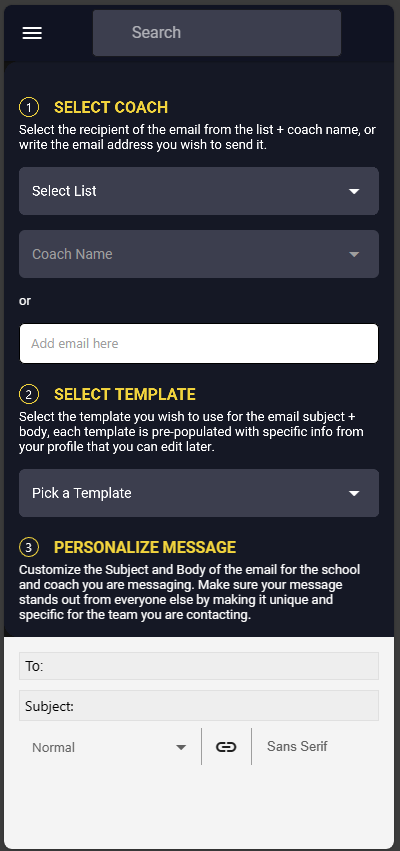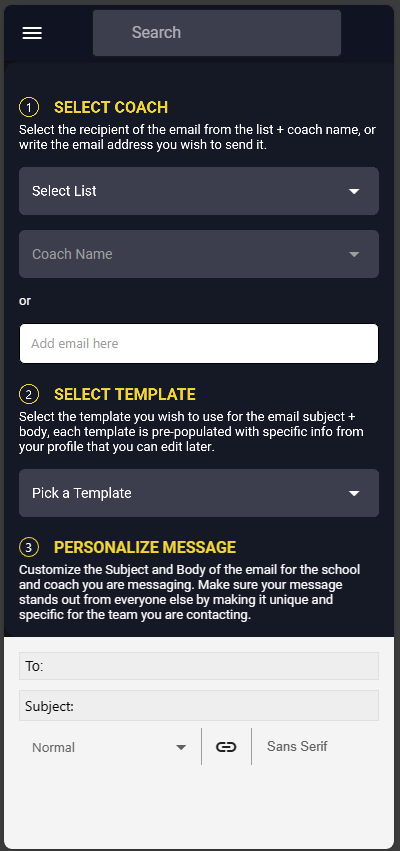

Available Coaches
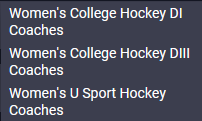
We currently have 3 sets of coaches that you can send emails to:
· Division I Women’s Hockey Coaches (all coaches)
· Division III Women’s Hockey Coaches (all head coaches and several assistants
· U Sports (Canada) Women’s Hockey Coaches (head coaches only)
Champs App Messaging sends real emails to coaches (regardless of whether or not they have an active Champs account). Coaches will receive the emails at their regular school email address (not within Champs App).
Send Yourself a Test Email
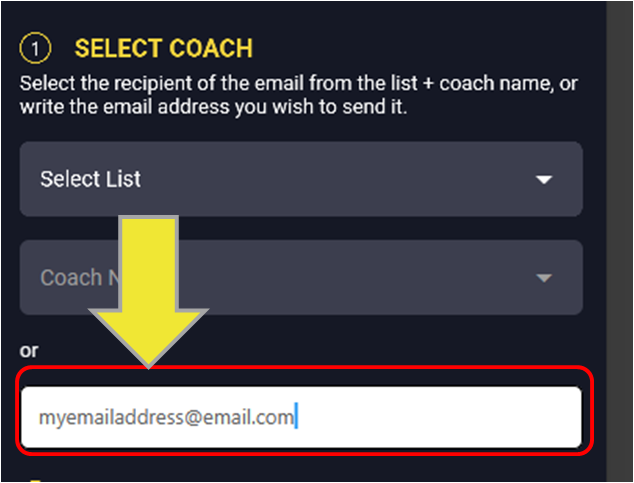
You have the ability to send messages by email address. So if you want to test the tool by sending an email to yourself you can. Or if you want to send an email to a non-college coach, you just need to put in their email address in the Step 1 box.
Message Templates
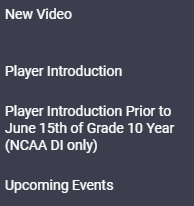
There are currently 4 templates that you can use to send emails to coaches. Just pick the template that is right for your situation. We will be adding more templates and features in the near future.
Note: The Subject line and the contents of the email can all be customized even after you select a template. This way you can ensure sending a unique message to a coach.
Make Sure Your Player Profile is Up-To-Date
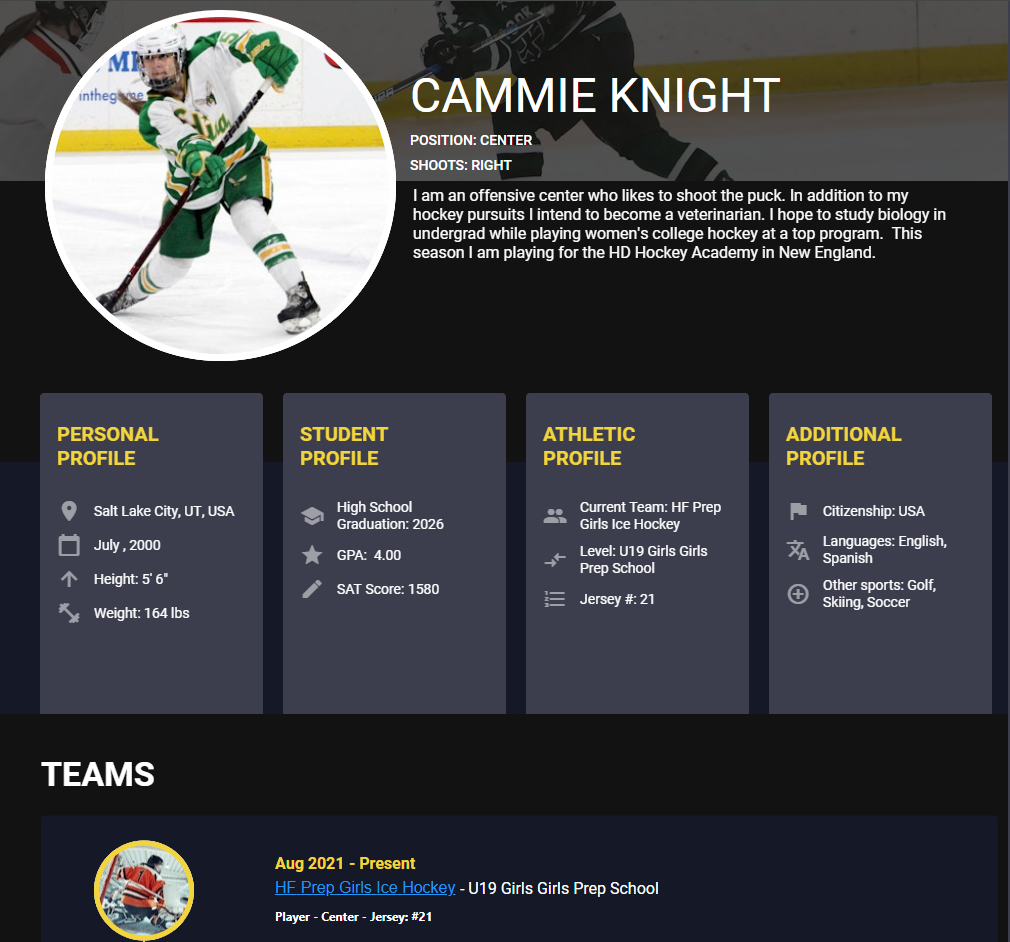
Every template automatically populates with information from your Player Profile into the email. So if you want to save yourself time from entering the same information multiple times, make sure your current team, graduation year, jersey #, upcoming schedule etc. are up-to-date.
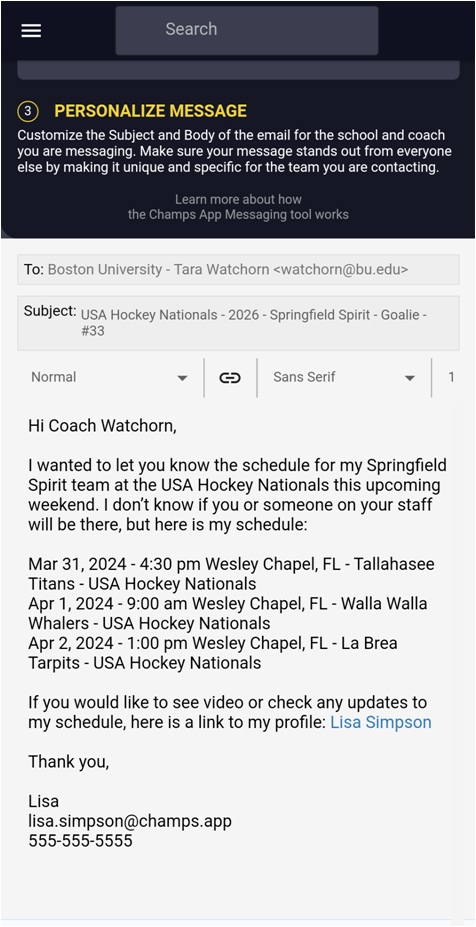
Email Details

Please note that the actual email gets sent via Champs App on a player’s behalf (with your name appearing as the Sender). Specifically, it is sent from a generic Champs email address. BUT, the “reply-to” email address is your own email address. In addition, your email address is included in the template by default. Most coaches probably won’t notice where it is sent from (they will focus on the name not the sender’s email address), but it is important for users to know exactly how it works.


